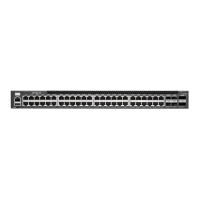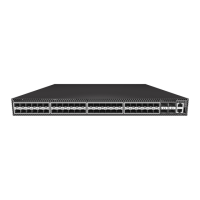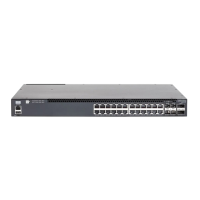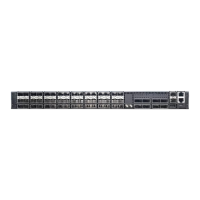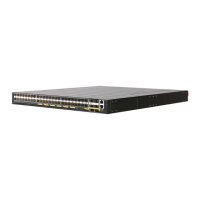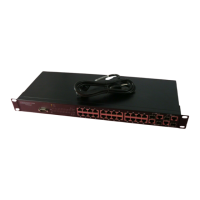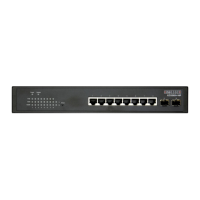Chapter 21
| Data Center Bridging Commands
DCB Exchange Commands
– 546 –
DCB Exchange Commands
This section describes the commands used by DCB devices to exchange
configuration information with directly-connected peers. These commands are also
used to detect misconfiguration of the peer devices and, where accepted, to
configured peer DCB devices.
dcbx This command enables DCBX on the selected interface. Use the no form to disable
DCBX.
Syntax
[no] dcbx
Default Setting
Enabled
Command Mode
Interface Configuration (Ethernet, Port Channel)
Command Usage
◆ DCBX is normally deployed in FCoE topologies to support lossless operation for
FCoE traffic. In these scenarios, all network elements are DCBX enabled. LLDP is
also enabled on any port configured to use DCBX.
◆ DCBX uses LLDP to exchange attributes between two link peers. DCBX does
this by exchanging LLDP TLVs with peer devices to discover DCB capabilities
supported by a peer port, detect misconfiguration of a DCB feature between
the peers on a link, and perform configuration of DCB features on its peer port
if the peer port is willing to accept configuration settings. The configurable
attributes include ETS recommendation, ETS Configuration, and PFC.
◆ DCBX operates over a point to point link. If multiple LLDP peer ports running
DCBX are detected on an interface, then DCBX shall behave as if the peer port's
DCBX TLVs are not present until the multiple LLDP peer port condition is no
longer present.
Table 109: DCB Exchange Commands
Command Function Mode
dcbx Enables DCBX on the selected interface IC
dcbx mode Configures DCBX mode used for message exchange IC
show dcbx Shows the DCBX configuration settings PE
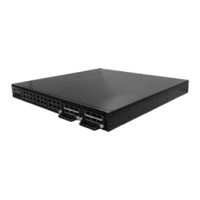
